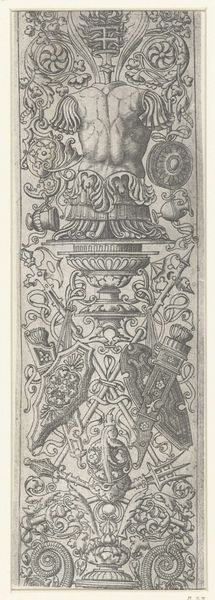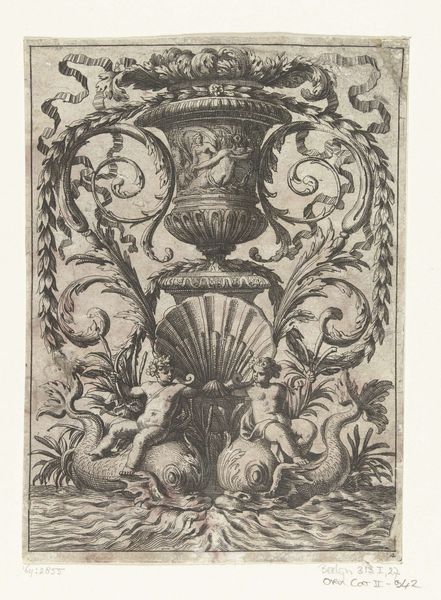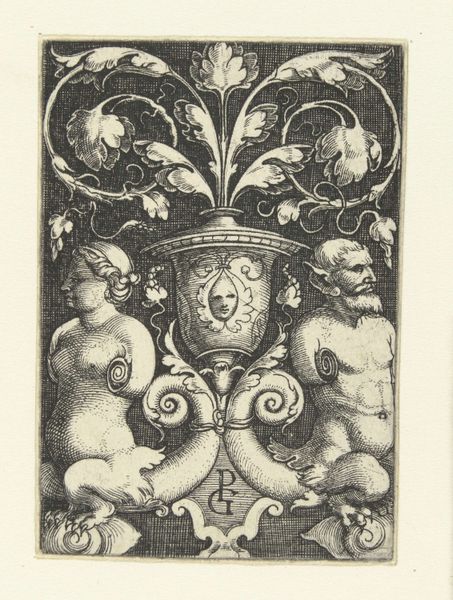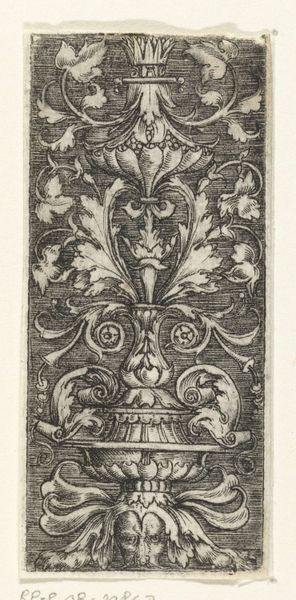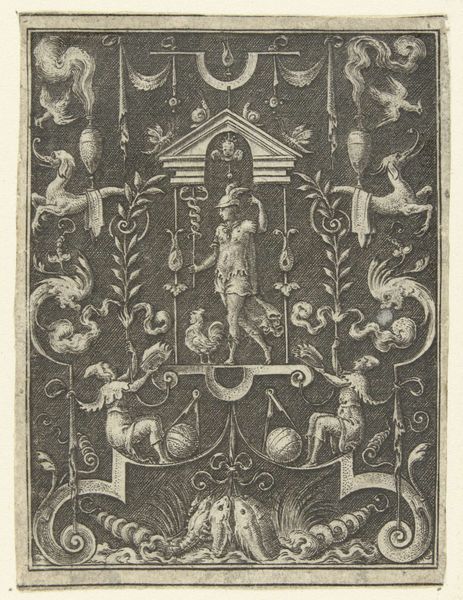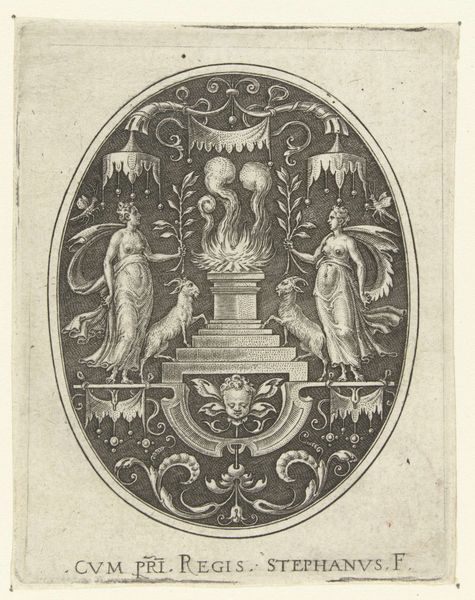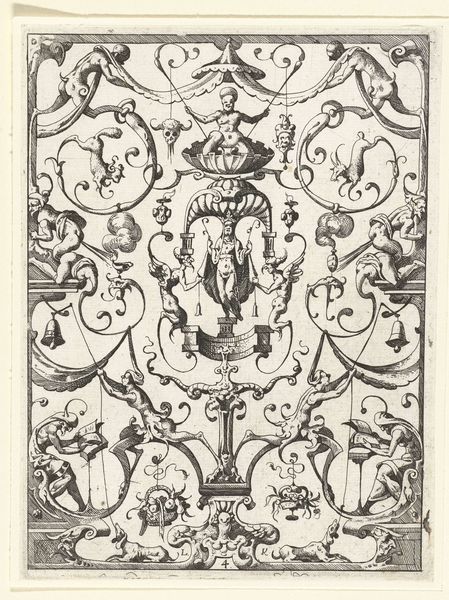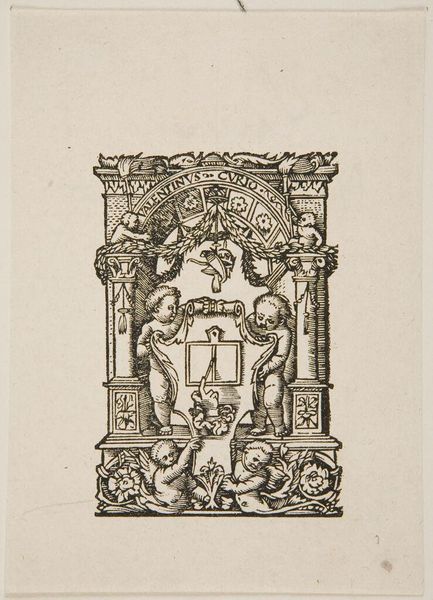
print, engraving
#
allegory
# print
#
old engraving style
#
figuration
#
11_renaissance
#
northern-renaissance
#
engraving
Dimensions: height 51 mm, width 31 mm
Copyright: Rijks Museum: Open Domain
Curator: Let's discuss this engraving by Sebald Beham, "Vase with Foliage, Resting on Two Dolphins," created between 1510 and 1524. Editor: It immediately strikes me as densely ornamental, almost claustrophobic. All those lines create a very tactile surface despite the obviously small scale of the print. Curator: Exactly, Sebald Beham was a key figure in the German Renaissance, often using allegory and symbolism in his work. In this print, we see a vase, not just as a vessel, but elevated, supported by dolphins, flanked by cherubic figures, and surrounded by lush foliage. How do you see these symbols operating together? Editor: Well, dolphins were often associated with swiftness, transformation, and salvation. The vase itself—its production as an object of luxury suggests status, of course, and is an assertion of craftsmanship. Those details seem designed to showcase wealth and perhaps hint at a transformation of material through labor. Curator: I agree, the deliberate choices, the specific visual language, situates it within the power structures of the time. These symbols aren't just aesthetic flourishes. We also must consider the function of prints like this one during the Renaissance. How were they consumed, and by whom? These images often acted as templates for artisans in other media, a visual vocabulary readily disseminated throughout workshops across Europe. Editor: So this engraving acted as a kind of blueprint. And given its size, you could imagine this being used in metalwork, even textiles, extending Beham's influence far beyond a gallery wall. Did Beham benefit financially? I am interested in the exchange of ideas during this period, of production and reuse across media. Curator: Precisely. Its reproduction provided a steady income, although he likely had little control over how others chose to interpret or adapt his imagery. What I see is his perspective as a radical peasant during that historical period reflected through this symbolism. Editor: Examining this from a production standpoint reveals connections between artist, workshop, and consumer in very tangible terms. Curator: Considering the era's complex dynamics around social status, the intersection of craft and luxury here opens numerous avenues for discourse. Editor: Looking beyond the surface unlocks all sorts of considerations of materials, labor, and the spread of ideas in Renaissance society.
Comments
No comments
Be the first to comment and join the conversation on the ultimate creative platform.
